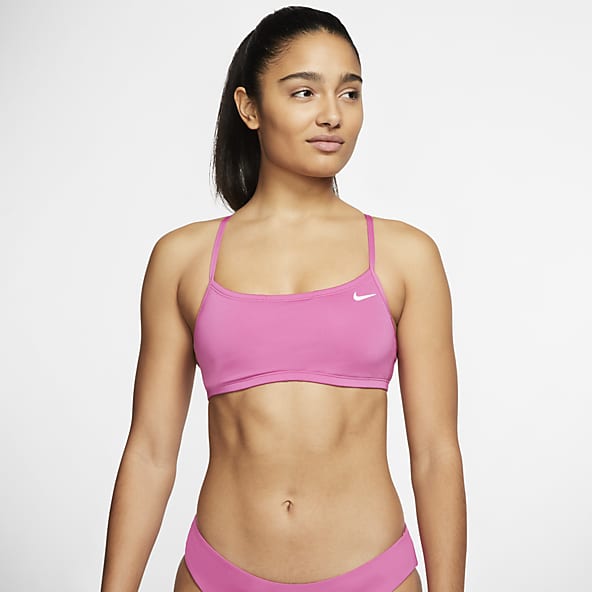
6 Best Stretching For Shoulder Before And After Workout | Shoulder Guide
Power up your strength With Shoulder Stretching For Pain & Muscles
So here we are highlighting 6 best stretching for shoulder and some of the important factors about shoulder pain and specifically, the most common type of shoulder pain the i-tree. Most of the renowned physical therapist talks about what it is and why you get this shoulder pain.
Shoulder pain, it’s not an issue, fortunately, there’s a lot that you can do to kind of stretch and strengthen your way out of it.
Now, Sharing with you, this best six shoulder workout that hopefully alleviate some of that pain that you might be experiencing,
6 Best Shoulder Injuries Recovery Stretching
1. Doorway stretch

Technique
- Start with your hands low, so put your hands on either side of the doorway
- Then, low at a comfortable level your sides
- And then take a big step in through the doorway
- And then just put your weight onto that front foot as you put your weight onto that front foot and you will feel good shoulder stretch.
Do this at list 3 sets, hold for about twenty to thirty seconds
Get Healthy Tips
Know all the healthy tips to keep yourself Fit & Active in COVID-19
Customized Diet & Many More
2. Rotator cuff strengthening exercises

Technique
- Standing straight, pull your shoulder blades together, towards your back
- And holds it for around 30 sec and rotate at 45 degrees to provide better strict to your shoulder
Do this, Exercise for 3 sets each set 60 sec
3. External rotation exercise

Technique
- External rotation exercise, first what you’re going to do is stand upright
- And then, the first step to take good posture so you’re going to roll your shoulders back
- Now, you’re going to tuck your shoulder blades down your elbows bent to a ninety-degree
- After that, you’re going to grab that band or the cable or whatever the handle
- Then keep your elbow at a ninety, keep your elbow tucked in right to your side and then pull away against that band as you externally rotate.
Do this, at list three sets
4. Table slides

Technique
This helps you bring your shoulders into a motion that elevates your arms without forcing you to move it against gravity.
While the table slides help your arm move out forward, moving out to the side – a motion called abduction often feels different on your shoulder. You can use a dowel to help with this motion.
Make sure though, that you don’t bring this stick all the way back, behind your head or out too far in front of you. You’re trying to bring your biceps up to your ear.




Check Out Nike Women's Swimwear
Stretches & Workout For A Frozen shoulder.
So a frozen shoulder, or technically it’s called adhesive capsulitis, is when you can’t really move your shoulder because there are so many adhesions in there. And usually, it’s underneath so it’s really hard to bring your arm up. And so it’s frozen and that’s why people call it frozen shoulder. It’s a lot easier to say.
Let’s get started.
1. PVC pipe starching
This workout is going to be a range of motion exercises that are active assistive, passive kind of in between.
But your arm that you’re working is kind of just going along for the ride. It can move a little bit, but the right side is pretty much doing all the movement and this one is just going along for the stretch.
If you have a little hook, like using a cane, that’s great, but if you don’t have that or a PVC pipe, you can use a broom or any kind of stick.
Technique
- So just, again with your thumb up, so you can just put it on the edge of whatever you’re using, push outwards.
- So you’re not really moving it a whole lot, you’re just letting the pipe do all of the pushing.
- So again, it’s not this, the elbow’s not coming off the side, you’re rotating, externally rotating, that shoulder in there.
- You want to go just to where you feel a really big tension. You don’t want to feel pain with this. So a little push holds it and then come back.
Repeat this exercise 2 of 3 set
You can also do these shoulder starching lying down if this is a little bit harder to start off with, you can do it lying down and have gravity kind of assist you to push it all the way over. So just start off with about 10 of these, work your way up to 20 – 25.
2. PVC Pipe Exercise For An External Rotation
The next one with the PVC pipe is going be an external rotation. So keep your elbow by your side.
A lot of times when people are really trying to stretch, they end up pulling that elbow off of their side. If you feel like it keeps coming off, roll up a towel and squeeze into it so you know that your elbow’s staying by your side and if the towel drops, you’re coming off of the side.
Technique
- So just, again with your thumb up, so you can just put it on the edge of whatever you’re using, push outwards.
- So you’re not really moving it a whole lot, you’re just letting the pipe do all of the pushing.
- So again, it’s not this, the elbow’s not coming off the side, you’re rotating, externally rotating, that shoulder in there.
- You want to go just to where you feel a really big tension. You don’t want to feel pain with this. So a little push holds it and then come back.
Repeat this exercise 2 of 3 set
3. Pendulum exercises

Pendulum workout. I like to do the pendulums with a frozen shoulder with a weight in your hand because it helps open up that joint just a little bit. So it’s gonna be slightly different than the normal ones.
Technique
- And remember, with the pendulums, you want to move your whole body, you don’t just want to be moving your arm even if you can. You really want to move that whole body and I think the weight helps you easily do that.
- So start off with circles, do 10 one way and then kind of reverse it. Stop hitting stuff, though. Reverse it back around and then do 10 more, that way.
- Then just do a side-to-side motion swinging back and forth.
Repeat 3 sets of 2 for 5 each
3. Pendulum exercises

Pendulum workout. I like to do the pendulums with a frozen shoulder with a weight in your hand because it helps open up that joint just a little bit. So it’s gonna be slightly different than the normal ones.
Technique
- And remember, with the pendulums, you want to move your whole body, you don’t just want to be moving your arm even if you can. You really want to move that whole body and I think the weight helps you easily do that.
- So start off with circles, do 10 one way and then kind of reverse it. Stop hitting stuff, though. Reverse it back around and then do 10 more, that way.
- Then just do a side-to-side motion swinging back and forth.
First, it’s important to note there are several different causes of shoulder pain and each body is different. It’s always best to first consult your physical therapist or your doctor to determine which exercises are specifically most appropriate for you.
Often times when people have shoulder pain they try to avoid using it. They might even have their shoulder closely and tensely guarded against their body.
One of the most important steps in decreasing your shoulder pain is getting that shoulder to relax.
Stretches & Workout For A Frozen shoulder.
So a frozen shoulder, or technically it’s called adhesive capsulitis, is when you can’t really move your shoulder because there are so many adhesions in there. And usually, it’s underneath so it’s really hard to bring your arm up. And so it’s frozen and that’s why people call it frozen shoulder. It’s a lot easier to say.
Let’s get started.
Stretches & Workout For A Frozen shoulder.
So a frozen shoulder, or technically it’s called adhesive capsulitis, is when you can’t really move your shoulder because there are so many adhesions in there. And usually, it’s underneath so it’s really hard to bring your arm up. And so it’s frozen and that’s why people call it frozen shoulder. It’s a lot easier to say.
Let’s get started.
Types Of Shoulder Muscle
What are the types of shoulder muscle involved in shoulder workout?
Basically, the shoulder is generally broken down in two different groups and they are called: intrinsic muscles and extrinsic muscles.
The intrinsic muscle start above the upper torso and the latter link to the shoulder bones (clavicle) and joint with the humerus. Within these two separate muscle groups, if you dig deep into it you would found that a range of the specific muscle.
The following muscle groups you would find involved in your shoulder workout
Extrinsic Shoulder Muscle
1. Trapezius muscles
Trapezius muscle shaped like a triangle, this muscle cross all over the shoulder blade and come down the spine area, giving support to your shoulder and arms while you try to do any function. The trapezius muscle has located both rights and left sides of your chest and back muscle.
2. Latissimus Dorsi shoulder muscle
The Latissimus Dorsi is by far the Broadest Muscle off the back and a well-developed muscle gives the torso the iconic V-Shape. It is Responsible for Extension Adduction and Internal Rotation of the Humerus.
3. Levator Scapulae
The levator scapulae muscle originates on the posterior tubercle of the transverse process of cervical vertebrae c1 through c4 it runs inferior and attaches to the superior medial border of the scapula this insertion point is in between the superior angle of the scapula and the spine of the scapula
4. Rhomboids muscle
The rhomboids muscle is generally responsible for the retraction of the scapula. The muscle is located in the middle in our upper and lower part of muscle blades and that divide between right and left.
Intrinsic Shoulder Muscles
The intrinsic shoulder muscles are muscles that are contained fully within the shoulder so they originate mostly on the scapula and insert on the proximal humerus so those are the muscles that you going to read further.
1. Deltoids
Deltoid muscle most of us know the main the action of the deltoid is the abduction of the shoulder this muscle is helping is receiving help for it another muscle we call its supraspinatus muscle supraspinatus and deltoid muscle they both perform abduction of the shoulder
2. Teres Major
The teres minor makes up the rotator cuff, which is a functional, anatomical unit in the upper arm. All the muscles of the rotator cuff originate from the scapula and insert in the humerus, but the teres minor muscle specifically originates from the lateral scapula border and inserts on the greater tubercle of the humerus.
3. Rotator Cuff
The rotator cuff, as the name suggests, plays a major role in the internal and external rotation of the upper arm and the shoulder joint. Its main function is to stabilize the glenoid cavity and keep the humeral head centred in the joint socket. This joint is the most flexible in the human body, and this group of muscles tighten around the joint to prevent a pinch during shoulder movement.








this article is really good!!!!
great work dh fitness
amazing work dh fitness will surely try this thank you!!!!!!